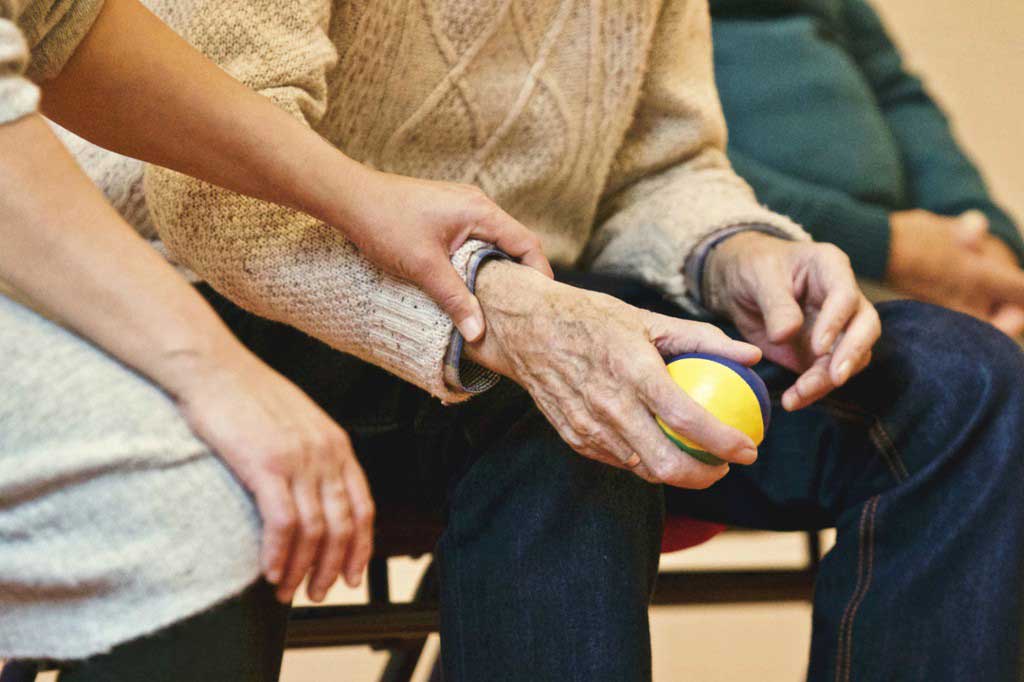Will pumping iron fight dementia?
Older people
Researchers have told pensioners to start pumping iron if they want to keep dementia at bay, the Daily Mail reported.
“Pensioners should start pumping iron if they want to keep Alzheimer’s at bay,” warned the Daily Mail. It said a study had found that lifting weights can improve cognitive function in those aged 65 to 75.
This study suggests there may be certain cognitive benefits in resistance exercise for older women compared with stretching and toning only. However, the study did not look at its effects on dementia or Alzheimer’s disease. The newspaper’s claim that older people should start “pumping iron” to avoid Alzheimer’s appears to be confused with another paper published in the same journal.
Maintaining physical activity is beneficial to health, and older people who are not capable of resistance training may find less strenuous activities to be of benefit. Those who do wish to take up resistance training should ensure that they are fit enough to do so and are exercising in the correct way, with advice from their doctor and a trained fitness instructor. See the Daily Mail 's story on weightlifting and dementia.
Where did the story come from?
The research was carried out by Dr Teresa Liu-Ambrose and colleagues from the Vancouver Coastal Health Research Institute and the University of British Columbia in Canada. The study was funded by the Vancouver Foundation, the Natural Sciences and Engineering Research Council of Canada, the Michael Smith Foundation for Health Research, and the Canada Foundation for Innovation. The paper was published in the peer-reviewed medical journal Archives of Internal Medicine.
What kind of research was this?
This was a single blind randomised controlled trial comparing the effects of different forms of exercise on cognitive function in older women. The main exercise of interest was resistance training (training involving weights or resistance machines).
Randomly assigning the participants into groups is the best way of ensuring that the groups being compared are as similar as possible, so that any differences between them can be attributed to the intervention being tested. Blinding the assessors in the trial reduces the chance that their beliefs about the different exercise programmes could affect the results. In this case, the participants could not be blinded to the intervention they were receiving, and could have let this information slip to the assessors. The researchers acknowledge that they did not check whether this had happened.
What did the research involve?
The researchers recruited 155 women aged between 65 and 75 years old (average age 69.6 years) using TV and print adverts. The women had to be living independently in their own homes, have a certain level of eyesight, and have normal cognitive function, according to a standard test. Women who had a medical reason why they could not exercise were excluded, as were those who had taken part in resistance exercise in the past six months. Also excluded were women who had suffered a neurodegenerative disease, stroke, or depression; or who were taking certain medications, including drugs for treating dementia.
The women were randomly assigned to one of three groups: a once-weekly resistance training group, a twice-weekly resistance training group, and a twice-weekly balance and tone training group (control group). The women participated in these exercises for a year. The classes were led by specially trained certified fitness instructors. The classes were an hour long, with a 10-minute warm-up, 40 minutes of core content, and a 10-minute cool-down. The resistance classes included machine-based exercises for the arms and legs, as well as free weights, squats and lunges.
The balance and tone classes included various exercises aimed at stretching, range-of-motion, basic core-strength and balance, as well as relaxation techniques. The participants were encouraged to stick with the exercises and the study through newsletters, social events, follow-up for those who missed classes, and other support.
The main outcome of interest to the researchers was the subjects’ performance on a test of cognitive function called the Stroop test. This test assesses selective attention and conflict resolution, which is the ability to selectively focus on the relevant pieces of information and filter out other pieces of information that may seem to be conflicting.
The test involves measuring how long it takes to correctly state the colour ink in which a word is printed, even when the word itself indicates a different colour (for example, the word ‘blue’ printed in black ink). This test was completed at the beginning, middle and end of the study. They also used another test of cognitive function (Trail Making Test) and working memory (short term memory), as well as walking speed, muscle function, brain volume as measured by MRI, and any adverse effects of the exercise.
The researchers compared the three groups of women on these measures. In total, 135 of the 155 women in the trial completed the full 52 weeks of the study, and were included in the analysis.
What were the basic results?
The participants completed on average about two-thirds of their classes. There was slightly higher adherence to classes in the resistance training groups (once-weekly: 71%; twice-weekly: 70.3%) compared with the balance and tone group (62%).
The researchers found that at the end of the year, both resistance training groups showed statistically significant improvements on the Stroop test of cognitive function compared to women in the balance and tone group. Performance had improved by 13% in the once-weekly resistance exercise group and 11% in the twice-weekly resistance exercise group, but it had deteriorated by about 0.5% in the balance and tone group.
There were no differences in working memory or the other test of cognitive function (Trail Making Test) between the groups either midway through the study or at its end. Peak muscle power increased in the twice-weekly resistance exercise group compared to the balance and tone group. Brain volume showed small reductions in the resistance exercise groups compared with the balance and tone group at the end of the study.
Musculoskeletal problems occurred in about 30% of women in the once-weekly resistance exercise group. About 11% of the twice-weekly resistance exercise group had the same problems, as did about 10% of the balance and tone group. These problems all reduced or resolved themselves within about a month of onset.
How did the researchers interpret the results?
The researchers concluded that a year of progressive once- or twice-weekly resistance training can improve specific aspects of cognitive function (selective attention and conflict resolution) as well as muscle function in senior women. They say that this has “important clinical implications because cognitive impairment is a major health problem that currently lacks a clearly effective pharmaceutical therapy and because resistance training is not widely adopted by seniors”.
Conclusion
This small study suggests that resistance training can lead to greater improvement in certain cognitive measures than exercises aimed at balance and toning. Points to note include:
- The researchers state that cognitive response to exercise differs between the sexes. Therefore these results may not apply to men.
- Although the Stroop test indicated that there were improvements in cognitive function with resistance training, another measure of cognitive function (Trail Making Test) did not show improvement. It is also not clear to what extent the improvements seen would affect the women’s daily lives or overall function.
- There was a relatively high rate of women sticking to the exercise programme in this study, possibly due to the steps taken by the researchers to encourage participation. It is likely that lower levels of compliance with the exercise programmes would lead to less improvement in outcomes.
This study found resistance exercise was associated with greater improvements in one measure of cognitive function in older women compared with balancing and toning exercise. However, it is not clear how these improvements would affect daily life. Although the Daily Mail reported that “lifting weights can stave off dementia”, this research did not look at the effects of resistance training on dementia or Alzheimer’s disease. A cohort study published in the same journal found that moderate to high physical activity reduced the risk of developing cognitive impairment in older people, but it did not look specifically at the effects of resistance training.
Most sorts of physical activity are likely to have some benefit to health and fitness, and older people who are not capable of resistance training may still find less strenuous activities to be of benefit. Those who wish to take up resistance training should ensure that they are fit enough to do so, are exercising in the correct way, and asking for advice from their doctor and trained fitness instructors if required.






 Subscribe
Subscribe Ask the doctor
Ask the doctor Rate this article
Rate this article Find products
Find products








